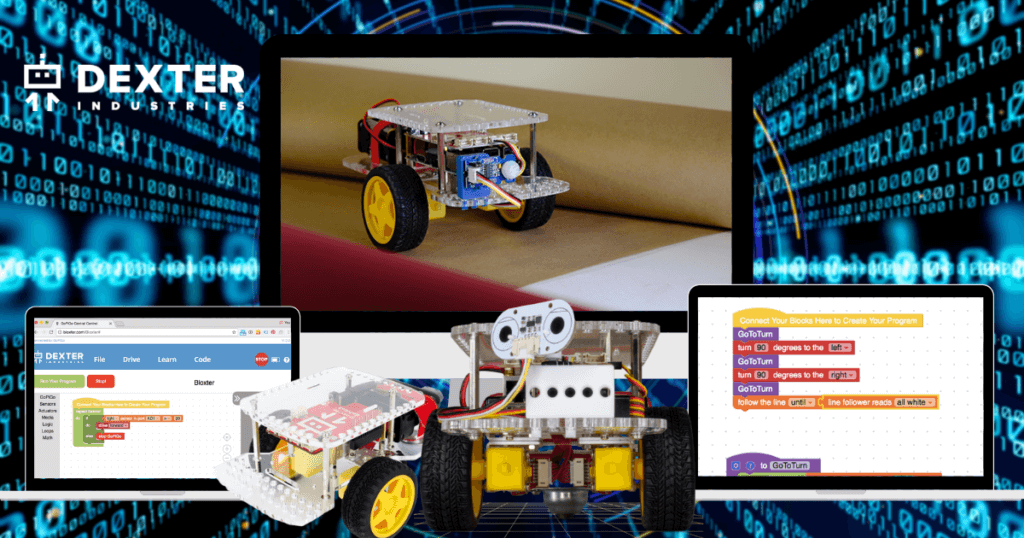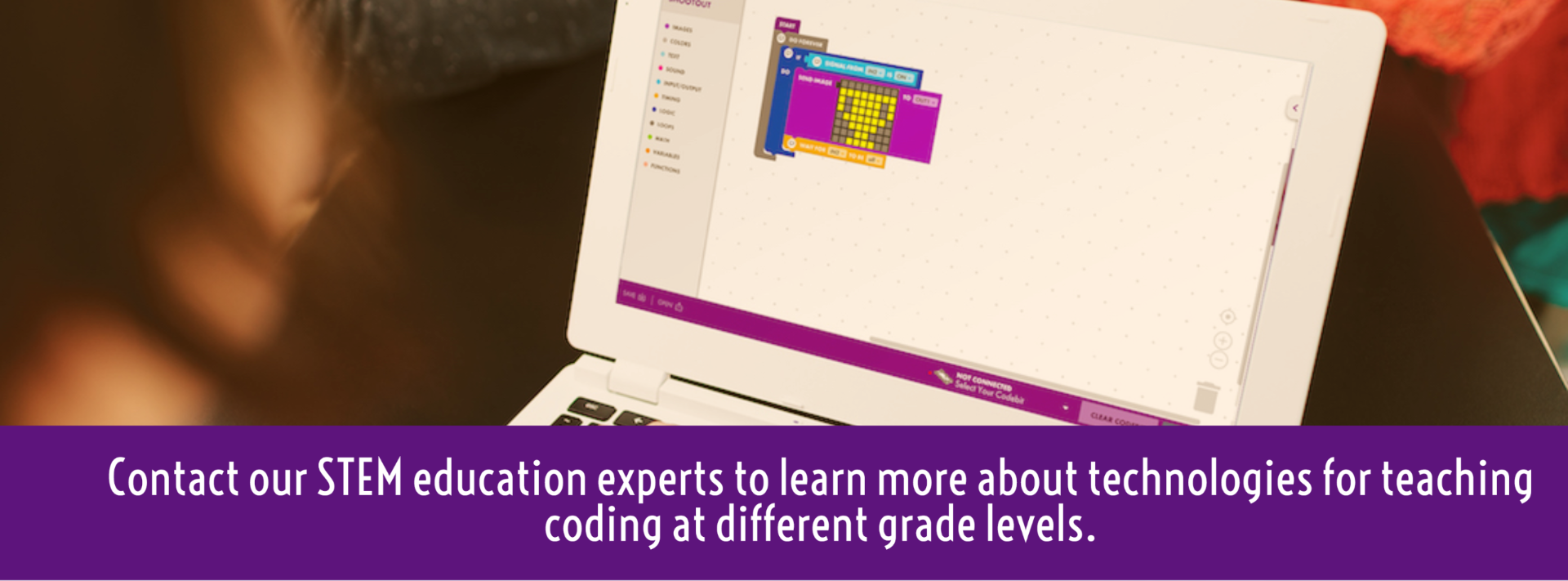All indications are that coding will continue to be an essential skill for today’s students. It’s not completely unanimous since some people see more value in helping students develop soft skills but, based on what we know about the current economy and its future, it sure seems that coding will be key in more than computer science jobs. Knowing this, in some areas, students are required to learn computer science, but these programs aren't always robust. Starting an afterschool coding program to supplement those classes can be tough, however, especially when cramming all the other requirements into the school day. There are ways to make it happen, though, including subtly introducing coding in different subjects and creating clubs to help students access experiences they need.
Introducing Coding in the Elementary Curriculum
It’s no secret that computing technology is a driving force behind innovation around the world. That’s all well and good, but students aren't always taught the skills they need for excelling in this world. Despite the demand for computer science skills, not all students can classes and experiences they need to develop them. Even if you do have a coding curriculum in place, it doesn’t always mean it’s a good one. It's estimated that only about 59 percent of K-12 students are taking classes with coding elements. At the same time, the job market consistently lacks skilled workers, leading to struggles filling computer science and programming jobs.
So, how can school and district leaders develop beneficial coding programs and implement them in all schools? Currently, computer science is a curriculum requirement in just over 30 states. While this number is not as high as we may like, it has gone up in recent years. Almost all parents, however, want their children to learn to code because of its vast implications on the future. They often want them introduced to coding early on as well because learning to code is like learning a language. It’s best to start early in a child’s life to get their feet wet. Then, they'll perfect their skills over time as they continue to practice and expand into new areas.
With that said, coding in elementary schools is no easy task, but one that's worth pursuing. One thing school leaders can do is connect with other educators, who can help recommend a curriculum, product line, or strategies for creating classroom experiences. There's tons of computer science content, curricula, advice, and tools available. Teachers should also trust their students and work with them to find something that's enjoyable and beneficial for each one. Besides that, it’s important to form a team (a small one is fine) and constantly work together to keep developing the plan, discover what works and what does not, and remind each other to continue having fun while implementing coding in the early grades.
Coding Clubs Prepare Kids for Jobs
Libraries, in recent years, have become much more than just places where kids and adults go to read. Many are repurposed as community hubs, innovation centers, and makerspaces, which is perfect for how the economy is progressing. One other purpose is for hosting coding clubs, which allow kids to use STEM tools to explore new languages and build a foundation for potential use in the future. Not only is the job market heavy on coding, it's also an extremely valuable skill from an entrepreneurial perspective, too. They could pursue game development, software development, or many other areas with this background—formal or informal—in coding.
The availability of coding clubs in libraries provides parents with another opportunity to reinforce its importance. If something as recognizable as a library is transforming, their kids may notice. They may also notice other kids practicing coding and how it can be fun rather than another subject to learn. With coding skills, students may have their pick at STEM careers in the future. Although it's far away for some of them, it’s important to provide opportunities for them to discover passions. Best of all, there are plenty of coding tools that make it easy for librarians without much coding experience to set up a coding station and facilitate lessons right in the library.
When kids are coding in the library, they’re in control of problem solving rather than having their teacher or librarian solve problems for them. As important as it is for kids to develop programming skills, these skills also lay the groundwork for building other critical 21st century abilities. Sometimes, kids aren't learning skills like persistence, creativity, and problem solving in a typical classroom setting, but those are all key. Coding clubs create a ton of beneficial opportunities for students and have become quite popular around the world. Through programs like these, kids can see that, no matter how young they are, they can design solutions and make an impact. Coding just happens to be one of the most viable vehicles for achieving this.

Coding Classes Could be All Over your Community
As you might know, coding classes and clubs are fairly common in our communities. They’re routinely available at colleges and STEM businesses as well as at many other places. Along with summer camps, other youth programs incorporate coding opportunities, including community-backed programs. While there might not be classes available at every club, it’s certainly worth checking if there are any at your local chapter. And, if they’re not, maybe they’re interested in starting something. To the kids who participate, coding clubs provide a new activity that’s fun and challenging. To their parents, they know it’s an investment in their child’s future.
One of the best ways to integrate coding experiences is through what's known as the Hour of Code. These initiatives allow students to practice programming at school for one week of the year—Computer Science Education Week. It's also easy to adapt them for community settings as well. Because the premise of one hour of coding per week is simple, it’s easy to launch programs in the community. All you really need is some coding tools and enough kids for some activities. There are also programs online, so all kids would need is a computer and an Internet connection. They can experiment with systems like Scratch or Minecraft—typically without needing any other downloads or tools. These are the kinds of tech tools that help kids see that even though coding is difficult, they can try again in a different way until they succeed.
Besides these clubs, other afterschool organizations also feature STEM learning as a focal point. They know that coding skills could make or break today’s students and want to help in developing them. Luckily, community code clubs are viable for children of all ages—starting very young and all the way up through high school. There is something about coding that brings people together in a community setting and, through this collaboration, kids can learn more than they would on their own. The best thing to do is look out for extra opportunities to practice coding and encourage kids to try! If you’re thinking about trying to launch a program like this, poke around for STEM grant opportunities to help provide you with some technology to get started. We award $500 a month to a deserving educator or member of the STEM community.
Coding Clubs Help Get Girls into STEM
Not only are coding clubs helpful for providing kids with more STEM opportunities in general, they can also help solve another problem. Today, the majority of the tech industry is male and, for whatever reason, girls seem to have much less interest in STEM careers. They often feel intimidated by boys or believe they're not as smart. Some people also hypothesize that, in general, girls are just less interested in pursuing a STEM discipline than boys. Whatever the reason, we believe in doing more to inspire girls towards giving coding a try. The pressure-free environment of an afterschool or community coding club, for example, could be just the cure. They definitely can help keep more young female students interested in this growing field.
If teachers feel students might try coding if it were an all-girls thing, you can start a girls coding club. You probably don’t need us to tell you, but you can do this in the same way as launching a regular coding club. Since girls tend to be more intimidated by boys rather than technology, however, educators could even use a lot of the same coding tools in their programs. Maybe girls aren’t as interested in things like Minecraft or robotics, but there are fun robots and other devices they could use instead. It doesn’t have to be formal and, as long as there's a group of committed girls, it could catch on.
At the community level, there are plenty of opportunities for girl-centered coding clubs. Librarians have the space and usually the desire to help students succeed, so, if you’re looking to create a program like this, that's a good place to start. Especially during the winter months, when there are fewer sports and other activities available, this is a perfect time to help girls discover a love for coding and problem solving. Starting small with even a few girls in a community program can help in reducing the gender gap. If you would like some help or advice when it comes to launching a coding club for girls, feel free to contact us or check out some of the organizations for just that—like Girls Who Code, Black Girls Code, or 100 Girls of Code!

The Future of Coding in Schools
There are some obvious reasons many parents and educational leaders believe in teaching coding in every school. They include the demand for coding skills in the workforce and the fact that coding helps students learn other important skills, like problem solving and creativity. There are other reasons coding education is valuable, however, including that it helps invigorate student-centered learning and collaboration and reinforces the notion that coding is a form of literacy. Coding challenges, in fact, help kids learn programming skills and nuances and prepare them for future careers. They start to see what skills they need for working with artificial intelligence, self-driving cars, or smart houses, for example.
Computers have evolved from machines that simply help people get stuff done to become devices we rely on, use to express ourselves, and change the way we think about the world. New opportunities are constantly created, leading to a greater need for skilled programmers to update the software and hardware. While coding in an elementary or middle school classroom is not as complex, this point helps illustrate the continuous need for skilled programmers. As teachers prepare students for tomorrow’s workforce, they often focus on student-centered teaching, which definitely helps in learning coding. Computer science is about allowing students to explore, experiment, and create, which they can do right in the classroom at all levels of education.
As for the future, some think coding should be mandatory early in education and required for a high school diploma. The amount of computer programmer and computer scientist jobs is expanding rapidly—almost as rapidly as 10 years ago—and there is a correlation between filling those vacant jobs and teaching coding to kids from an early age. Even if vacant computer science jobs remain unfilled in 20 or 25 years, we still need to teach coding. Not everyone grows up to become a professional writer—in fact, a very small percentage of us do. But, we still teach writing to every student because it is a fundamental literacy. That’s exactly what we believe about coding. Follow us on Twitter for more.




